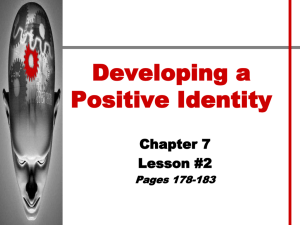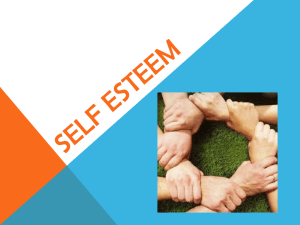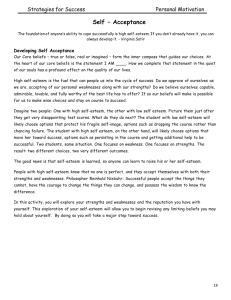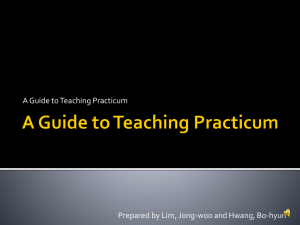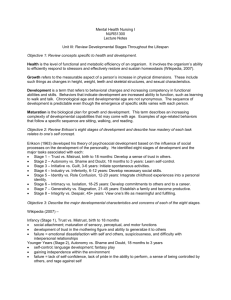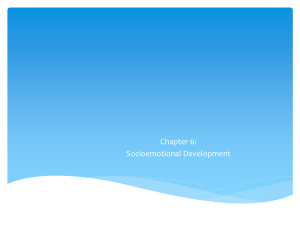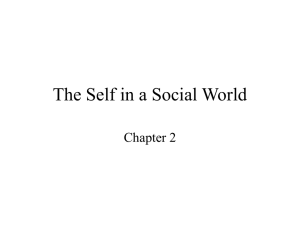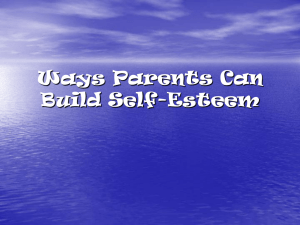Achieving Good Mental Health
advertisement
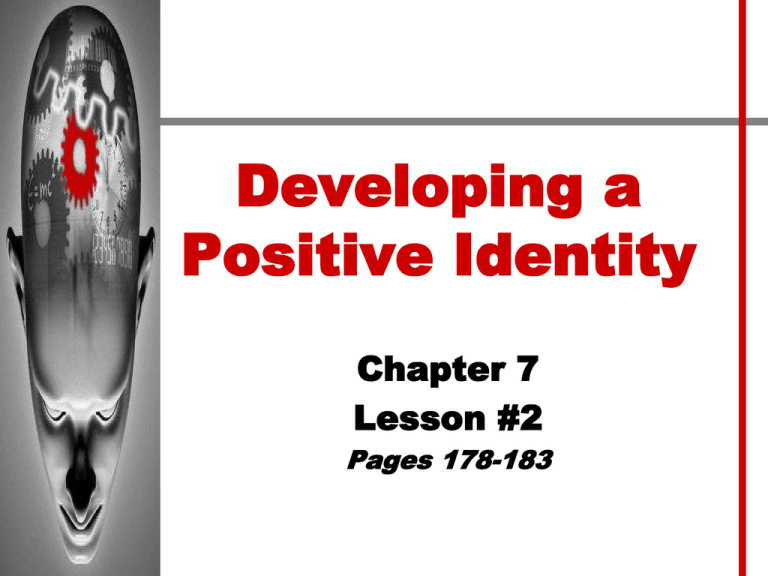
Developing a Positive Identity Chapter 7 Lesson #2 Pages 178-183 Developing a Positive Identity • Objective 1: Define developmental assets and how they can keep you from risky behaviors. • Objective 2: Construct strategies for developing a healthy identity. • Objective 3: Correlate how selfesteem and a positive outlook benefit your mental/emotional health. Your Personal Identity (pg. 178) • Personal Identity – Your sense of yourself as a unique individual • Like putting together a jigsaw puzzle, including your; – – – – – Interests Likes and dislikes Talents and Abilities Values and beliefs Goals Developmental Assets • The building blocks of development that help young people grow up as healthy, caring and responsible individuals. • Developmental Assets include; – – – – – – – – Support Empowerment Boundaries and Expectations Constructive Use of Time Commitment to Learning Positive Values Social Competencies Positive Identity • Page 179 Figure 7.3 Answer on your own paper • Which of these Developmental assets Do you consider especially important? (it can be more than one. • WHY????????? What it takes to Gain a Healthy Identity (pg. 181) – 1) Recognize your strengths and weaknesses • Take pride in your strengths and accomplishments • Set goals for accomplishing your weaknesses – Activity: Partner up and list 3 different strengths you feel your partner has – List 3 of your weaknesses. THEN, what are you doing to improve your weakness? – 2) Demonstrate positive values • Guide your actions and influence the decisions you make. Ex: show honesty, comfort a sad friend, being trustworthy, etc. – Activity: Share a story with your partner when you demonstrated one of your positive values and how you felt afterwards. Healthy Identity – 3) Develop a purpose in your life • Framework for your mental health as your grow • Sense of purpose = goals and achieving them – Activity: Share one long term goal with your partner and WHY you want to achieve it. Will the why bring you happiness? Discuss. - 4) Form meaningful relationships • Helps develop a sense of purpose in your life • Helps build confidence and a sense of security or belonging – Activity: Share with your partner how a person can be a positive influence on you and how they could be a negative influence on you. Healthy Identity • 5) Contribute to the community – Provides services and resources to meet your needs – Giving back gives you a sense of accomplishment • 6) Avoid unhealthy risk behaviors – A normal part of life, helps define and develop you – Healthful risk-taking has a positive effect on developing who you are as a person – Unhealthy risks can be dangerous Self-Esteem and Positive Outlooks • Self-Esteem- Comes from the understanding that you are a unique and valuable human being. • When you have a healthy identity, you will experience increased self-esteem and a higher level of mental/emotional health. • Having a positive outlook is also related to your general level of wellness Working Toward High Self-Esteem (pg. 182) • People with high self-esteem…. – – – – Take responsibility for their behavior Generally have a positive outlook on life Like and accept who they are overall Try to learn from their successes as well as from their mistakes – Build and maintain healthy relationships • To improve self-esteem… – Think of appropriate ways to share your positive attributes – Engage in behaviors that will promote your health Realistic Patterns of Thinking • To increase your self-esteem and develop a positive outlook on life, its important to see events REALISTICALLY. • Constructive Criticism – Non-hostile comments that point out problems and encourage improvement • Analyzing Self-Talk – Replace negative messages with constructive criticism. If you make a mistake, tell yourself everyone makes mistakes and LEARN from your mistake. – Be able to tell yourself “Good Job!” Interactive study guide • http://glencoe.mcgrawhill.com/sites/dl/free/0078726549/35 9990/InterActCh7Ls2.html
